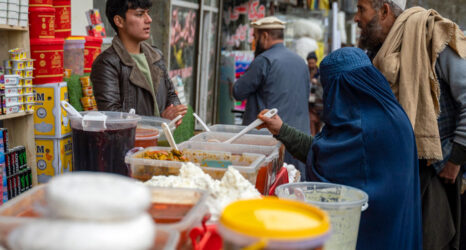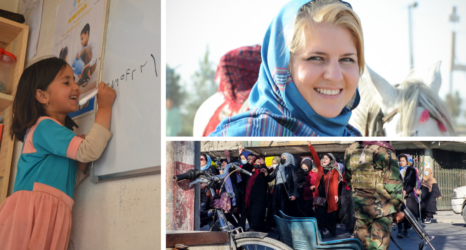Many are celebrating today, ourselves included. But being the level-headed, pragmatic feminists that we are, we can’t help but temper the festive mood with a healthy dose of analysis. Eager to see just how far we’ve come in the 15 years since Hillary Rodham Clinton famously declared women’s rights to be human rights, we’ve been closely following this week’s session of the UN Commission on the Status of Women, where delegates are conducting a 15-year review of the implementation of the Platform for Action, a global agenda for women’s empowerment created in 1995. We’ve read all of the reports presented at the meeting–plus several others released recently–so you don’t have to. Here’s how we’re doing:
Global Figures:
Poverty: Twenty-five percent of the world population was living in extreme poverty as of 2005, compared to nearly 50 percent in 1990. But this heartening progress has been stalled, and may even be reversed, by the global economic crisis, which is expected to keep 73- to 100-million more people in poverty and disproportionately push women into economically vulnerable work. See the Millenium Development Goals Report 2009.
Education: Not as much progress here. Fifty-four percent of girls are out of school, compared to 57 percent in 2002 and 64 percent in 1990. Women make up two-thirds of the world’s illiterate. See the EFA Global Monitoring Report 2002, 2010.
Health: The maternal mortality rate remains virtually unchanged. There are 450 maternal deaths per 100,000 lives births in the developing world as of 2005, compared to 480 deaths in 1990 (Millenium Development Goals Report 2009). HIV/AIDS is now the leading cause of death and disease in women of reproductive age (Women and Health Report, World Health Organization 2009).
Violence: Violence against women has increased in many countries since 2005, with indigenous women, young women and ethnic minorities particularly affected (Beijing +15 Report of the Secretary General, PDF).
Politics: Eight countries had women heads of state in 2009: Argentina, Chile, Finland, India, Ireland, Liberia, Lithuania and the Philippines. Nearly 19 percent of parliamentary seats were held by women in 2009, nearly double the 11.3 percent of 1995, but this still falls far below the 2015 goal of 30 percent (Inter-Parliamentary Union 2009).
Regional Achievements & Challenges:
Latin America & Carribbean: The creation of institutions for women’s advancement has coincided with greater democratic freedoms in this region, but the majority of countries still lack formal mechanisms for dealing with gender issues. While poverty has declined markedly over the last 15 years, the global economic crisis has reversed some of that progress.
Africa: The region has made considerable progress in achieving gender parity in education, with net enrollment having increased to 74 percent from 58 percent in the last decade. However, most countries still lag in all 12 areas of critical concern, and the region is not likely to meet Millenium Development Goals by 2015.
Western Asia: Many countries jhere have implemented legislative reforms supporting gender equality in business, increasing political participation for women and criminalizing trafficking and exploitation of women and girls. However, the gap between law and reality is significant; women are still heavily affected by armed conflict, and there is an absence of statistics and analysis related to women’s issues in the region.
Asia & the Pacific: Improvements are evident in educational attainment and the introduction of anti-violence legislation in this region, but women are disproportionately affected by the global economic crisis, reports of violence against women have increased and many countries in South Asia have some of the highest maternal mortality rates in the world.
Europe: Almost full gender parity in education has been achieved in Europe, and considerable progress has been made at developing legislation related to gender equality. However the region still lags in women’s economic empowerment, political empowerment, anti-violence efforts and the creation of institutional mechanisms for gender equality.
Disappointingly, but perhaps not surprisingly, we still have a lot of work to do. While the educational attainment gap is closing fast in all regions, and many countries have passed important legislation regarding gender discrimination and violence against women, the global economic crisis has exacerbated women’s poverty in the developing world. It has also adversely affected women’s already low economic participation, and threatens educational opportunities for both girls and boys. Moreover, the progress that has occurred has been at a much slower pace than expected. In other words, there’s plenty of work left to do.
Read the global synthesis of regional outcomes. Read more Ms. coverage on global women’s rights here.





